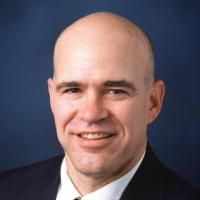Designing a network of critical zone observatories to explore the living skin of the terrestrial Earth
Date
2017-12-18
Journal Title
Journal ISSN
Volume Title
Repository Usage Stats
views
downloads
Citation Stats
Abstract
The critical zone (CZ), the dynamic living skin of the Earth, extends from the top of the vegetative canopy through the soil and down to fresh bedrock and the bottom of the groundwater. All humans live in and depend on the CZ. This zone has three co-evolving surfaces: the top of the vegetative canopy, the ground surface, and a deep subsurface below which Earth's materials are unweathered. The network of nine CZ observatories supported by the US National Science Foundation has made advances in three broad areas of CZ research relating to the co-evolving surfaces. First, monitoring has revealed how natural and anthropogenic inputs at the vegetation canopy and ground surface cause subsurface responses in water, regolith structure, minerals, and biotic activity to considerable depths. This response, in turn, impacts aboveground biota and climate. Second, drilling and geophysical imaging now reveal how the deep subsurface of the CZ varies across landscapes, which in turn influences aboveground ecosystems. Third, several new mechanistic models now provide quantitative predictions of the spatial structure of the subsurface of the CZ.
Many countries fund critical zone observatories (CZOs) to measure the fluxes of solutes, water, energy, gases, and sediments in the CZ and some relate these observations to the histories of those fluxes recorded in landforms, biota, soils, sediments, and rocks. Each US observatory has succeeded in (i) synthesizing research across disciplines into convergent approaches; (ii) providing long-term measurements to compare across sites; (iii) testing and developing models; (iv) collecting and measuring baseline data for comparison to catastrophic events; (v) stimulating new process-based hypotheses; (vi) catalyzing development of new techniques and instrumentation; (vii) informing the public about the CZ; (viii) mentoring students and teaching about emerging multidisciplinary CZ science; and (ix) discovering new insights about the CZ. Many of these activities can only be accomplished with observatories. Here we review the CZO enterprise in the United States and identify how such observatories could operate in the future as a network designed to generate critical scientific insights. Specifically, we recognize the need for the network to study network-level questions, expand the environments under investigation, accommodate both hypothesis testing and monitoring, and involve more stakeholders. We propose a driving question for future CZ science and a hubs-and-campaigns
model to address that question and target the CZ as one unit. Only with such integrative efforts will we learn to steward the life-sustaining critical zone now and into the future.
Type
Department
Description
Provenance
Citation
Permalink
Published Version (Please cite this version)
Publication Info
Brantley, SL, WH McDowell, WE Dietrich, TS White, P Kumar, SP Anderson, J Chorover, K Ann Lohse, et al. (2017). Designing a network of critical zone observatories to explore the living skin of the terrestrial Earth. Earth Surface Dynamics, 5(4). pp. 841–860. 10.5194/esurf-5-841-2017 Retrieved from https://hdl.handle.net/10161/21237.
This is constructed from limited available data and may be imprecise. To cite this article, please review & use the official citation provided by the journal.
Collections
Scholars@Duke

Daniel D. Richter
Richter’s research and teaching links soils with ecosystems and the wider environment, most recently Earth scientists’ Critical Zone. He focuses on how humanity is transforming Earth’s soils from natural to human-natural systems, specifically how land-uses alter soil processes and properties on time scales of decades, centuries, and millennia. Richter's book, Understanding Soil Change (Cambridge University Press), co-authored with his former PhD student Daniel Markewitz (Professor at University of Georgia), explores a legacy of soil change across the Southern Piedmont of North America, from the acidic soils of primary hardwood forests that covered the region until 1800, through the marked transformations affected by long-cultivated cotton, to contemporary soils of rapidly growing and intensively managed pine forests. Richter and colleagues work to expand the concept of soil as the full biogeochemical weathering system of the Earth’s crust, ie, the Earth’s belowground Critical Zone, which can be tens of meters deep. The research examines decadal to millennial changes in the chemistry and cycling of soil C, N, P, Ca, K, Mg, and trace elements B, Fe, Mn, Cu, Be, Zr, and Zn across full soil profiles as deep at 30-m. Since 1988, Richter has worked at and directed the Long-Term Calhoun Soil-Ecosystem Experiment (LTSE) in the Piedmont of South Carolina, a collaborative study with the USDA Forest Service that quantifies how soils form as natural bodies and are transformed by human action, and a study that has grown to become an international model for such long-term soil and ecosystem studies. In 2005, Richter and students initiated the first comprehensive international inventory project of the world’s LTSEs, using an advanced-format website that has networked metadata from 250 LTSEs. The LTSEs project has held three workshops at Duke University, NCSU's Center for Environmental Farming Systems, and the USDA Forest Service's Calhoun Experimental Forest and Coweeta Hydrologic Laboratory, hosting representatives from Africa, Asia, Australia, Europe, and the Americas. Richter's 60-year old Long Term Calhoun Soil and Ecosystem Experiment is linked to similar experiments and platforms around the world via the ‘Long-Term Soil-Ecosystem Experiments Global Inventory’, assembled by Dan Richter, Pete Smith, and Mike Hofmockel."He is an active member of the International Commission on Stratigraphy’s Working Group on the Anthropocene. Richter has written in the peer-reviewed literature about all of these projects, and in November 2014 his soils research at the Calhoun and his soils teaching were featured in Science magazine.
Unless otherwise indicated, scholarly articles published by Duke faculty members are made available here with a CC-BY-NC (Creative Commons Attribution Non-Commercial) license, as enabled by the Duke Open Access Policy. If you wish to use the materials in ways not already permitted under CC-BY-NC, please consult the copyright owner. Other materials are made available here through the author’s grant of a non-exclusive license to make their work openly accessible.
